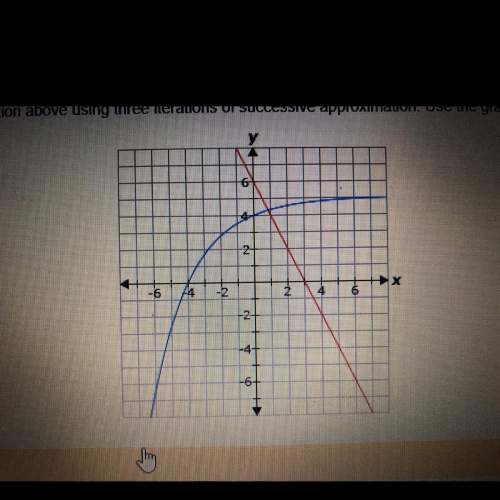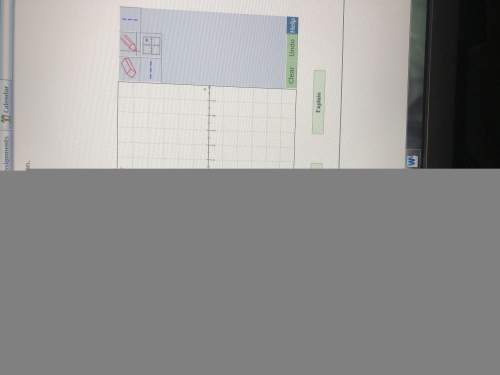Consider the following equation.
-2x + 6 = -(2/3)^x+5
approximate the solution to the eq...

Mathematics, 03.07.2019 02:40 julissa848
Consider the following equation.
-2x + 6 = -(2/3)^x+5
approximate the solution to the equation above using three iterations of successive approximation. use the graph below as a starting point.
a. x = 7/8
b. x = 13/18
c. x = 3/4
d. x = 15/16


Answers: 2
Another question on Mathematics

Mathematics, 21.06.2019 14:00
If benito is selecting samples of five values from the table, which row will result in the greatest mean? row 1 row 2 row 3 row 4
Answers: 2

Mathematics, 21.06.2019 16:00
Determine the mean and variance of the random variable with the following probability mass function. f(x)=( 729divided by 91) (1 divided by 9) superscript x baseline comma x equals 1,2,3 round your answers to three decimal places (e.g. 98.765).
Answers: 3


Mathematics, 21.06.2019 19:00
What is the percentile for data value 6 in the following data set? 4 13 8 6 4 4 13 6 4 13 2 13 15 5 9 4 12 8 6 13 40 25 35 62
Answers: 2
You know the right answer?
Questions


History, 26.11.2021 08:00

Geography, 26.11.2021 08:00

English, 26.11.2021 08:00




Mathematics, 26.11.2021 08:00

Mathematics, 26.11.2021 08:00

Biology, 26.11.2021 08:00

Mathematics, 26.11.2021 08:10

Mathematics, 26.11.2021 08:10

English, 26.11.2021 08:10

Mathematics, 26.11.2021 08:10

Arts, 26.11.2021 08:10


History, 26.11.2021 08:10

Mathematics, 26.11.2021 08:10

English, 26.11.2021 08:10






